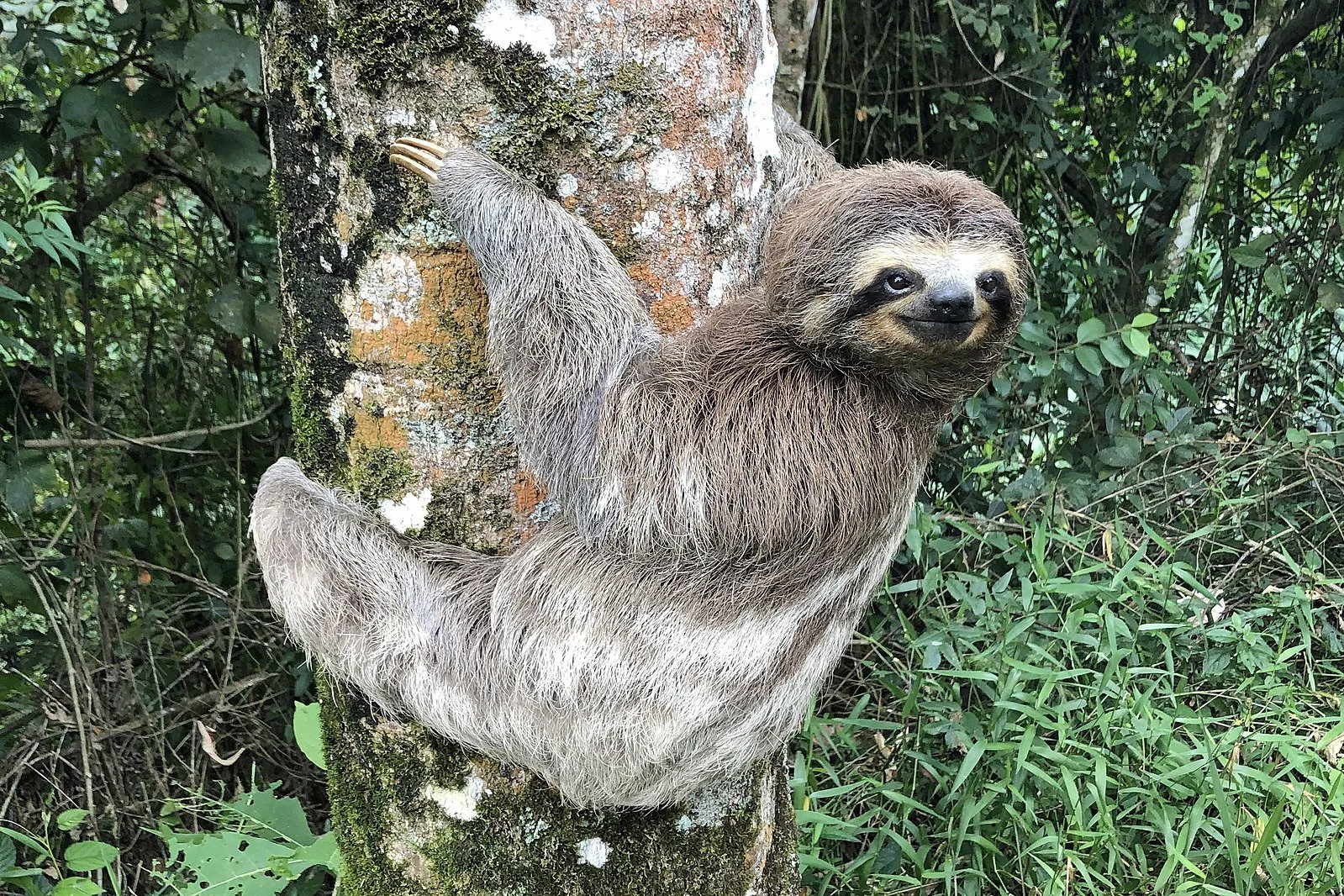How do birds navigate during migration?
The short answer
Birds navigate their migration journeys by first developing an internal map of visual and smell landmarks. Then birds rely on sun and star positions to orient themselves, and they also use Earth’s magnetic field, which they can sense through tiny magnetic particles in their beaks or potentially "see" using a special light-sensitive protein in their eyes.
The long answer
Birds don't have Google Maps.
Yet somehow they migrate hundreds, or even thousands, of miles without getting lost.
A look at the jaw-dropping distances some birds cover in their migration journeys.
"Migrationroutes" by L. Shyamal is part of the public domain.
We know that birds either learn migration routes from older birds or inherit the distance and direction of their migration in their genetic code.
But if you want to get from point A to point B, you need a map and a sense of direction. Let's start with bird maps.
Birds need a map
During a bird's first migration, it builds out a mental map which will enable it to make the same journey year after year. They identify visual landmarks along the way, like rivers, mountains, and forests. Birds also use scent landmarks to recognize familiar locations.
"Bird flying by mountains at rara national park" by Patrick.drown is licensed under CC BY-SA 4.0.
While not all birds survive their first migrations (~30% of songbirds don't make it back 😢), those that do are equipped with a detailed map to guide them on their subsequent journeys.
Birds need a sense of direction
Birds have a few tricks up their wings to help them navigate. Research has found that birds are equipped with at least three compasses, some of which are similar to how ancient humans used to navigate.
Compass #1: Sun compass
Scientists have determined that birds use the sun to navigate. They sense the sun's position in tandem with their internal circadian clock to understand the time of day, which helps them adjust their flight direction accordingly.
Compass #2: Star compass
Also like human navigators, birds seem to use stars as cues to navigate. During nighttime migrations, birds utilize a star compass by recognizing star patterns and constellations, particularly around the North Star, which remains nearly stationary.
Compass #3: Magnetic compass
Studies have also suggested that birds have a magnetic compass. In an experiment observing how birds oriented themselves, a device was placed around covered bird cage that shifted the direction of the Earth's magnetic field. When the magnetic direction changed, so did the birds change their direction.
Source: ScienceDirect
Two hypotheses explain how this magnetic compass works in birds: a mechanical sensor and/or a chemical sensor.
🧲 Mechanical Sensor Hypothesis
Some birds, including homing pigeons and chickens, have been found to have trace amounts of magnetite particles in their beaks. Magnetite, as the name suggests, is a highly magnetic iron oxide crystal that aligns with magnetic north. So it's possible that birds might sense magnetic pull through magnetite particles in their beaks.
"Magnetite-118736" by Robert M. Lavinsky is licensed under CC BY-SA 3.0.
Interestingly, some bird breeders buy magnetite powder to feed it to their birds in an attempt to increase the homing power of their offspring.
🧪 Chemical Sensor Hypothesis
Recent research has discovered that birds have a light-sensing protein in their eyes, known as cryptochrome, which may allow birds to literally see magnetic fields. This fascinating capability is thought to be based on a quantum phenomenon known as the radical pair mechanism.
Screenshot from "How quantum mechanics help birds find their way" ⬅️ I highly recommend watching!
When cryptochrome absorbs light, it undergoes a chemical reaction that produces a pair of molecules, each with an unpaired electron. These molecules, known as free radicals, form what's called a radical pair. Because both radicals are created simultaneously, their unpaired electrons become quantum entangled. This means the electrons' properties are interconnected, so a change in the state of one electron instantly affects the other, no matter how far apart they are.
So, what does this have to do with bird navigation? The quantum state of these radical pairs is highly sensitive to magnetic fields. Depending on the alignment of the Earth's magnetic field, the entangled electrons can switch between different quantum states.
These states influence chemical reactions, potentially signaling the bird's brain via the cryptochromes to "see" magnetic fields.
Here's how researcher Henrik Mouritsen describes it: "So maybe it's kind of a shadow on top of whatever else you would be seeing as a bird, but what exactly the bird is seeing we do not know because we cannot ask the bird."
Curious about how the world works?
Today You Should Know is a free, weekly email newsletter designed to help you learn something new every Friday.
Subscribe today 👇
Check out some other curious questions:
Sources
Bush, S. (2018, July 9). How do Birds Navigate? - Sun, Stars, and Magnetic Senses. YouTube. https://www.youtube.com/watch?v=sHmdzXjgrHA
Cornell University. (2008, April 1). The Basics: How Birds Navigate When They Migrate. All About Birds. https://www.allaboutbirds.org/news/the-basics-migration-navigation/
Goldman, J. (2020, May 1). Shorebird Learns Long Migration Routes. Scientific American. https://www.scientificamerican.com/article/shorebird-learns-long-migration-routes/
Hore, P., & Mouritsen, H. (2022, April 1). How Migrating Birds Use Quantum Effects to Navigate. Scientific American. https://www.scientificamerican.com/article/how-migrating-birds-use-quantum-effects-to-navigate/
Nature Video. (2021b, June 23). How quantum mechanics help birds find their way. YouTube. https://www.youtube.com/watch?v=0SPD2r0xV8k
Science Magazine. (2016, December 1). We Don’t Know: Magnetoreception. YouTube. https://www.youtube.com/watch?v=tdXb_4EkYtU
Vincent, A. (2021, August 20). How some birds use magnetism to migrate. CREW Land & Water Trust. https://crewtrust.org/how-some-birds-use-magnetism-to-migrate/
Wiltschko, R., & Wiltschko, W. (2012). The magnetite-based receptors in the beak of birds and their role in avian navigation. Journal of Comparative Physiology, 199(2), 89–98. https://doi.org/10.1007/s00359-012-0769-3
Wu, K. (2019, February 6). A bird’s eye view of quantum entanglement. PBS. https://www.pbs.org/wgbh/nova/article/birds-quantum-entanglement/
Xu, J., Jarocha, L. E., Zollitsch, T., Konowalczyk, M., Henbest, K. B., Richert, S., Golesworthy, M. J., Schmidt, J., Déjean, V., Sowood, D. J., Bassetto, M., Luo, J., Walton, J. R., Fleming, J., Wei, Y., Pitcher, T. L., Moise, G., Herrmann, M., Yin, H., … Hore, P. J. (2021). Magnetic sensitivity of cryptochrome 4 from a migratory songbird. Nature, 594(7864), 535–540. https://doi.org/10.1038/s41586-021-03618-9










It’s like an American accent but with calendars.